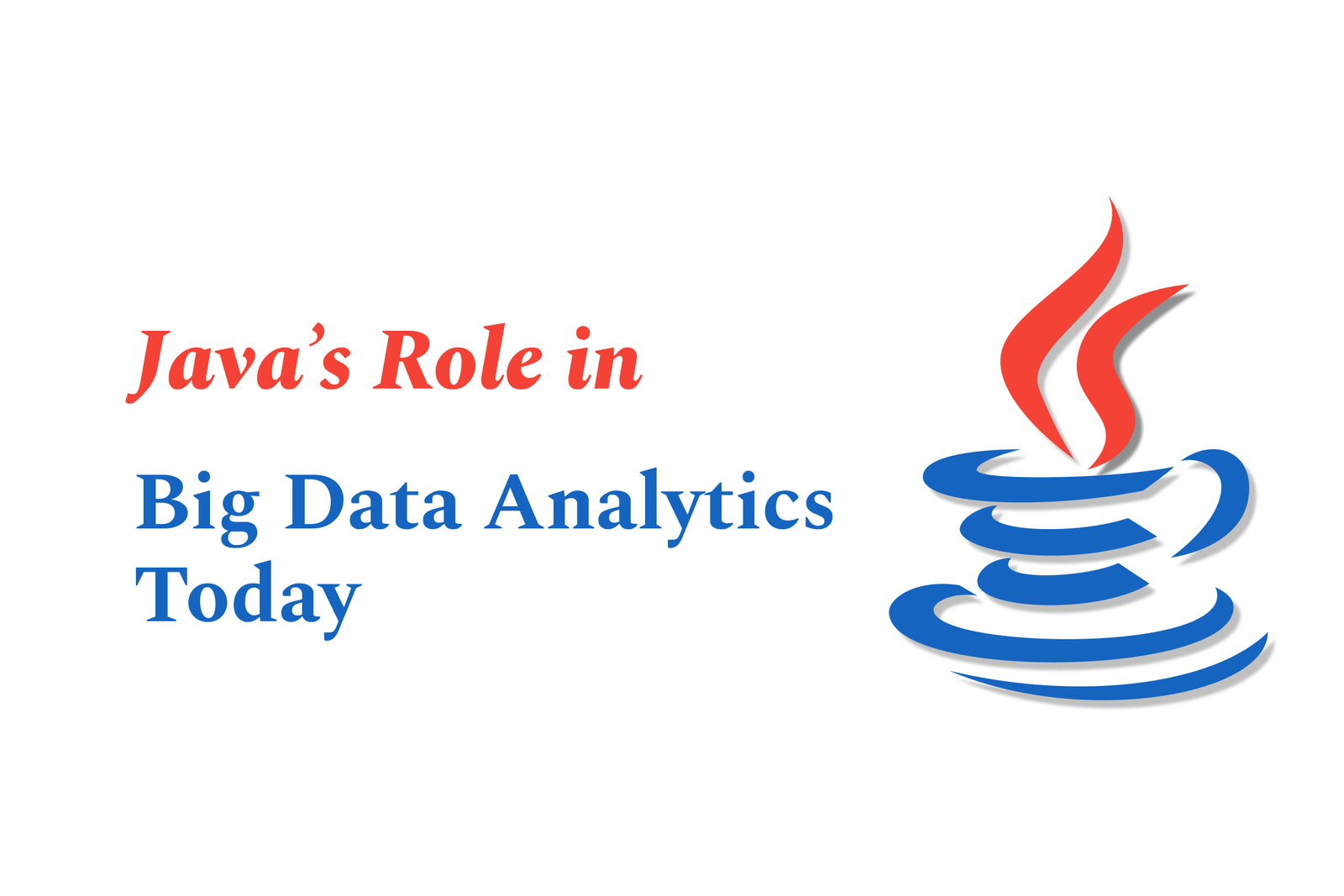Java?S Role In Big Data Analytics Today
Java plays a vital role in big data analytics today by powering key frameworks like Hadoop and Spark. Its scalability, performance, and rich ecosystem enable efficient processing of massive datasets, making it a preferred choice for building robust, high-performance big data applications.
Java’s Role in Big Data Analytics Today
1 ) Introduction to Java and Big Data Analytics
Java remains a cornerstone language in the field of big data analytics due to its robustness, scalability, and large ecosystem. Its platform independence and rich set of libraries make it ideal for building complex data processing systems.
2 ) Java’s Integration with Big Data Technologies
Many big data platforms and frameworks like Apache Hadoop, Apache Spark, Apache Flink, and Apache Kafka are written in Java or have Java APIs, enabling seamless development and execution of big data applications. Java's compatibility ensures efficient interaction with distributed systems and data storage layers.
3 ) Performance and Scalability Advantages
Java offers strong performance due to Just In Time compilation and efficient memory management, which is critical for handling large scale data processing. Its multithreading capabilities support parallel data processing, enhancing throughput and scalability in big data environments.
4 ) Ecosystem and Tooling Support
The Java ecosystem includes numerous libraries and tools tailored for analytics, machine learning, and data integration. Frameworks like Weka and Deeplearning4j provide Java based machine learning capabilities, bridging analytics with big data workflows.
5 ) Community and Industry Adoption
A vast community of developers and enterprises support and use Java for big data analytics, ensuring continuous evolution and innovation. Its widespread adoption in industries reinforces Java’s role in the development of scalable, reliable big data solutions.
6 ) Challenges and Future Outlook
While newer languages like Python offer simplicity and rapid prototyping advantages, Java’s performance and industrial strength keep it relevant. Advances such as Project Loom and improvements in JVM continue to enhance Java's suitability for big data analytics in the future.
Summary
Java plays a vital role in big data analytics today by providing a powerful, scalable, and versatile programming environment. Its deep integration with major big data tools, performance benefits, and extensive ecosystem make it indispensable for developing advanced big data applications. Despite competition from other languages, ongoing enhancements ensure Java remains at the heart of big data analytics solutions.
https://justacademy.in/news-detail/flutter-india-summit-2025:-key-takeaways
https://justacademy.in/news-detail/ios-app-monetization-strategies-that-work
https://justacademy.in/news-detail/java-development-trends-from-oracle-code-one-2025
https://justacademy.in/news-detail/react-native-performance-hacks-revealed-in-latest-update
https://justacademy.in/news-detail/how-react-native-apps-handle-offline-mode-like-pros
Related Posts
In 2025, top Angular libraries offer modern, feature-rich components and tools for building dynamic web apps. From powerful data grids to low-code platforms like UI Bakery, these libraries enhance development speed, UI design, and scalability, making them essential for Angular developers.
Migrating from AngularJS to Angular 17 involves gradually upgrading your app by running both frameworks together using tools like ngUpgrade, rewriting components in TypeScript, and adopting Angular’s modern architecture to enhance performance, maintainability, and long-term support.
Angular state management tools help organize and handle app data efficiently, improving scalability and maintainability. Popular options include NgRx for robust, RxJS-based patterns, and newer Signal Store solutions that offer simpler, reactive approaches integrated tightly with Angular’s latest features.
RxJS in Angular empowers developers to manage asynchronous data streams with powerful operators like `forkJoin`, `combineLatest`, and `zip`. Mastering these key operators in 2025 is essential for building efficient, reactive applications that handle complex event sequences seamlessly.
Angular performance optimization in 2025 focuses on improving app speed and responsiveness by using techniques like OnPush change detection, lazy loading, efficient data caching, and AOT compilation. These practices reduce load times, enhance user experience, and ensure scalable, fast Angular applications.
In 2025, Angular remains preferred for large-scale, enterprise apps with its robust, all-in-one framework, while Vue attracts developers seeking simplicity and fast development for smaller projects. Both frameworks excel, with choice driven by project needs and team expertise.
Angular Signals are a new reactive primitive in Angular 16 that enable fine-grained, efficient change detection by automatically tracking dependencies and updating only affected parts of the UI. They simplify state management and boost app performance, revolutionizing Angular's reactivity model.
Angular interview questions to prepare in 2025 focus on core concepts like components, directives, data binding, routing, and dependency injection, along with TypeScript mastery and latest Angular features to ensure strong practical knowledge for building scalable, efficient web applications.
AngularJS reached its official end of support in January 2022, meaning no further updates or security patches. To ensure app security and performance, developers should consider migrating to modern Angular versions or seek third-party long-term support options if immediate migration isn’t possible.
The Angular Roadmap 2025 highlights upcoming features focused on improving developer experience and performance, including zoneless Angular, Signals integration, enhanced Forms, async data handling, improved HMR, and expanded Angular Material/CDK enhancements, driving modern, efficient web app development.










